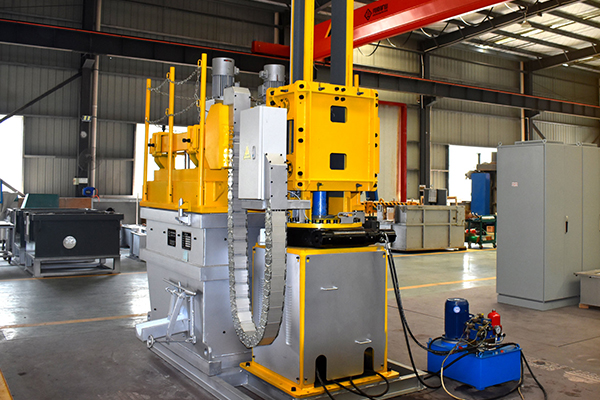Online Degassing Unit generally includes two parts: a degassing device and a heating device. The degassing device uses a graphite rotor to transport N2 to the inside of the molten aluminum in the degassing box to remove the H2 contained in the molten aluminum. Then, the speed of the graphite rotor is controlled by adjusting the speed of the stepper motor. The heating device generally uses an electric heating element to generate heat to control the temperature of the molten aluminum within the required range. Especially when the temperature of molten aluminum is too low, the temperature of molten aluminum is raised. The lifting and lowering of the degassing box adopt mechanical structure lifting or hydraulic transmission lifting.
Online Degassing Unit achieves the purpose of stable operation by changing the power transmission mode of the rotor, so that the rotor can run at high speed, thereby removing H in molten aluminum.
Currently, rotor speeds are typically 300 to 450 rpm, with a maximum of 600 rpm. After replacing the bottom gearbox, the length of the transmission shaft is shortened, the length of the rotating shaft is shortened, the rigidity of the transmission shaft is increased, and the swing of the turntable is reduced, so that the maximum speed can reach 900rpm and run stably. The degassing efficiency has also been further improved, and can reach 50%-65% or more of the conventional degassing rate.

At present, most aluminum alloy casting processes have been applied to Rotary Degassing Equipment. The practice has proved that different liquid temperatures in the online degassing device have different degassing effects. Therefore, it is necessary to consider the liquid temperature requirements for the degassing effect of the online degasser.
Due to the low casting temperature, the gas in the mold is too late to emerge from the liquid surface, causing porosity and porosity, and possibly also quality defects such as slag and cold insulation.
The high casting temperature should not exceed the melting temperature. Casting temperatures that are too high can cause aluminum leakage at the start of casting.
Because of the different lengths of the transfer tools and the different temperature drops of the liquid, there are hot spots on the lines and the temperature of the liquid fluctuates greatly during the transfer process. Therefore, the casting temperature should refer to the temperature of the liquid injected into the mold. Typically, the casting temperature is 50°C to 70°C higher than the actual crystallization temperature of the alloy.

